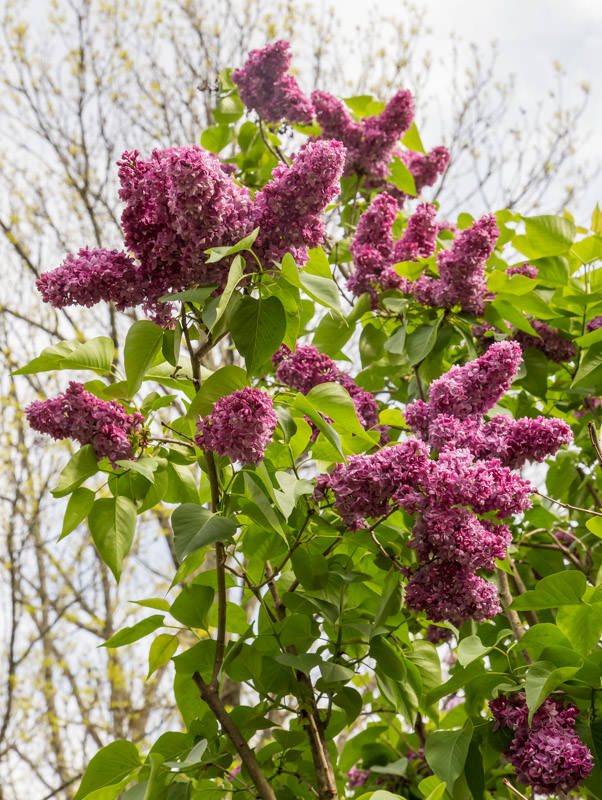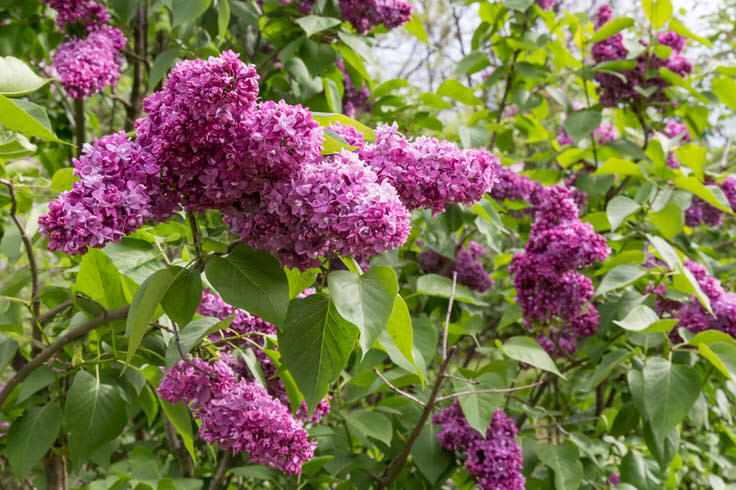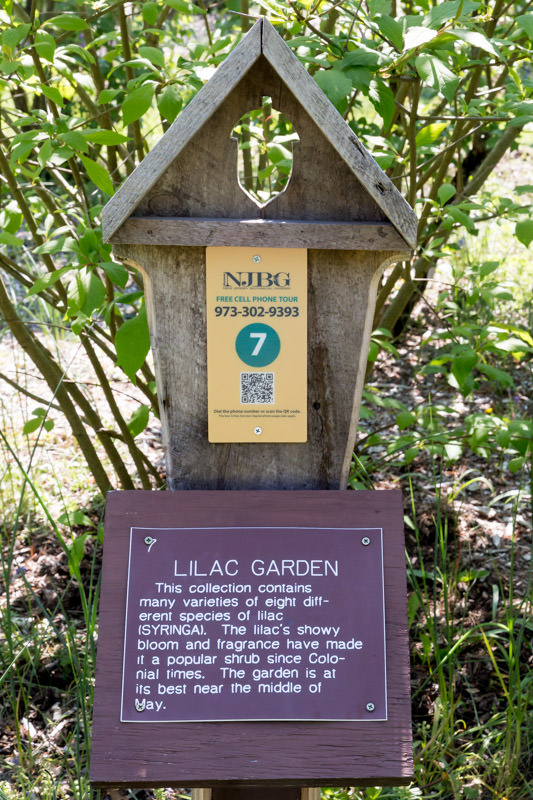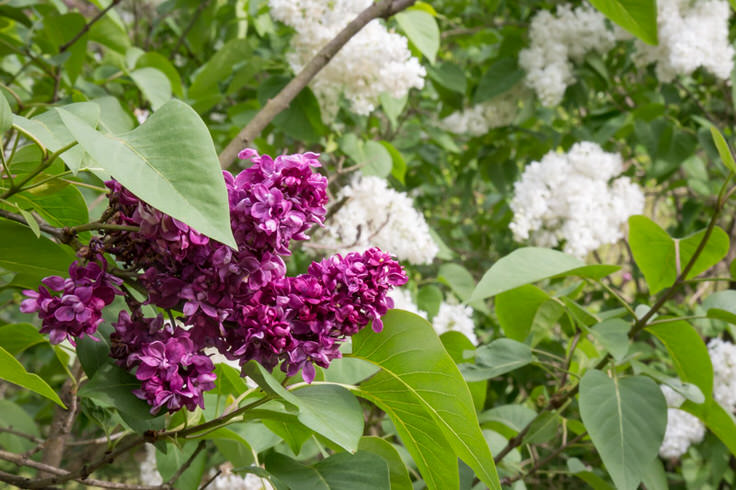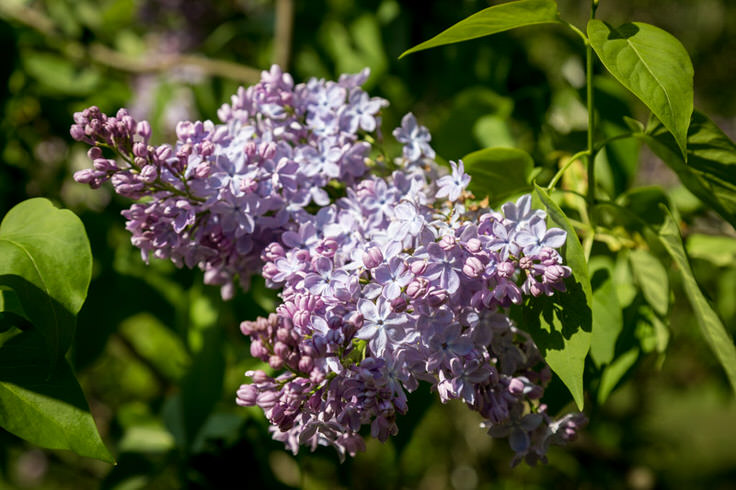As plant enthusiasts, we are very fortunate to share our home in Ringwood, NJ with the New Jersey Botanical Gardens (NJBG) located located at Skylands Manor. The botanical gardens are a place we often visit for relaxation and inspiration. The NJBG covers 96 acres and has something for everyone: acres of lush ornamental gardens, miles of hiking trails, and a grand historic Tudor-revival mansion located at the park’s center. From April through October, the park has nearly constant color as something is always in bloom.
The origins of the NJBG begin with the purchase of the land by Clarence McKenzie Lewis, an investment banker in NYC, in 1922. Lewis sought out to transform his new estate into a botanical showcase on the New York / New Jersey border. To assist him in his goal, Lewis hired landscape designers Ferrucio Vitale, who worked on the National Mall and the National Gallery of Art in Washington, D.C., and Alfred Geiffert, known for designing the Princeton University grounds and Rockefeller Center. An avid collector of plants, Lewis collected plant specimens from all over the world. Upon his death in 1959, the land was purchased and operated as a college, Shelton College, for a little under a decade. The state purchased the land in 1966. In 1984, the park was designated as New Jersey’s state botanical gardens.
One of the many highlights at the NJBG are the lilacs, especially those found in the lilac garden located between parking lot B and Maple Avenue. The lilacs begin blooming in late April and with the various species and cultivars you can find lilac flowers blooming throughout April and May. According to the NJBG, peak flower time is often right around Mother’s Day. With that in mind, we made a trip to the lilac gardens earlier this week to enjoy the sights (and smells!) of the varied lilac species in bloom.
Clarence Lewis planted somewhere in the neighborhood of 200 lilacs throughout the 1920s. In addition to the lilacs scattered throughout the gardens, Lewis created 14 beds specifically designed for the lilacs. In 2000, the NJBG began the Lilac Restoration Project because the system used to identify the various lilacs that had been used for the past 80 years had become impractical. The Lilac Restoration Project had 4 main goals:
1) Identify and relabel the cultivars
2) Prune and rejuvenate
3) Add new varieties
4) Plant grape hyacinth along edges of beds for additional color
Care of Lilacs
Ideally, lilacs receive a minimum of 5 to 6 hours of direct sunlight each day in order to flower. Lilacs do best with a soil pH of approximately 6.5. Mulching, as we recommend with nearly all plantings, is a great way to retain moisture in the soil and to prevent weed growth around lilacs. Speaking of weeds, it is important to weed around lilacs as they do not do as well when forced to compete with weeds. Lilacs do not require deadheading, but doing so may lead to more flowers the following year. One of the most common problems with lilacs is powdery mildew, often causing an unattractive white film on the leaves in the summer. One way to reduce the problem is to ensure good air circulation. If powdery mildew does occur, it will not harm the plant. No treatment is necessary as the leaves will fall off naturally in autumn and the plants start afresh in the spring.
Lilacs are hardy plants, with some surviving in places where people no longer live. They can continue to thrive without being watered, tended to, or pruned. Even though they don’t need to be pruned, pruning lilacs ensures that they maintain a desired shape and prevents them from growing so tall that the flowers can be neither seen nor smelled. Although they can be pruned at virtually any time, it is recommended that lilacs be pruned immediately after flowering, but before the end of June to avoid borer invasion. Having had experience with rejuvenating mature lilacs, the NJBG recommends using a multiyear approach. Do not remove more than one-third of the old trunks in a year and cut near the base of the plant.
Visiting the New Jersey Botanical Gardens
If you have wondered why New Jersey is called the “Garden State,” one visit to the New Jersey Botanical Gardens will make it abundantly clear. The New Jersey Botanical Gardens are open 7 days a week between 8:00 am and 8:00 pm for most of the year. As part of the Lilac Restoration Project, the NJBG has attempted to identify and label the many varieties of lilacs contained in the gardens. Where successful, they have “attached plastic tags identifying species, the cultivar name, flower type and color, hybridizer, and the year the variety was introduced.” The lilacs are located in 11 beds in the main lilac garden and also in two rows near the carriage house, which also serves as the visitor center. For more information or to volunteer at the NJBG, visit their website at www.njbg.org or call them at (973) 962-9534.


